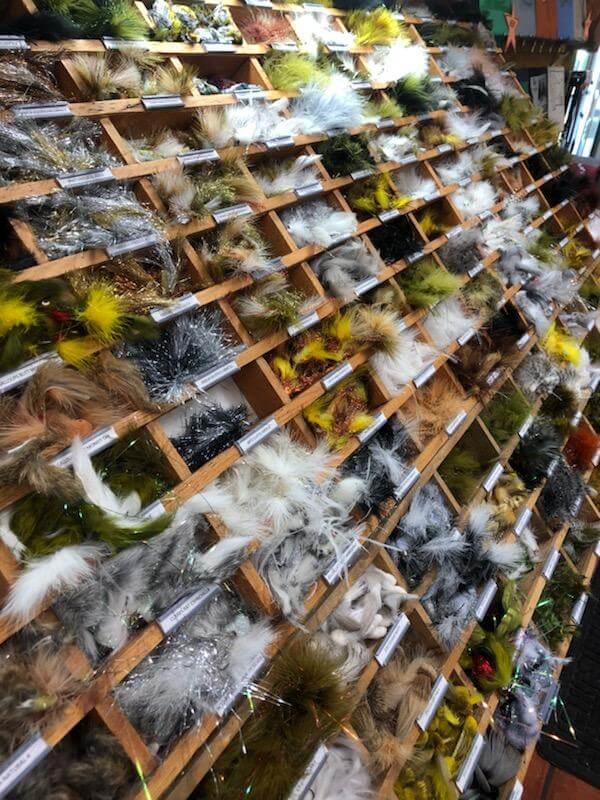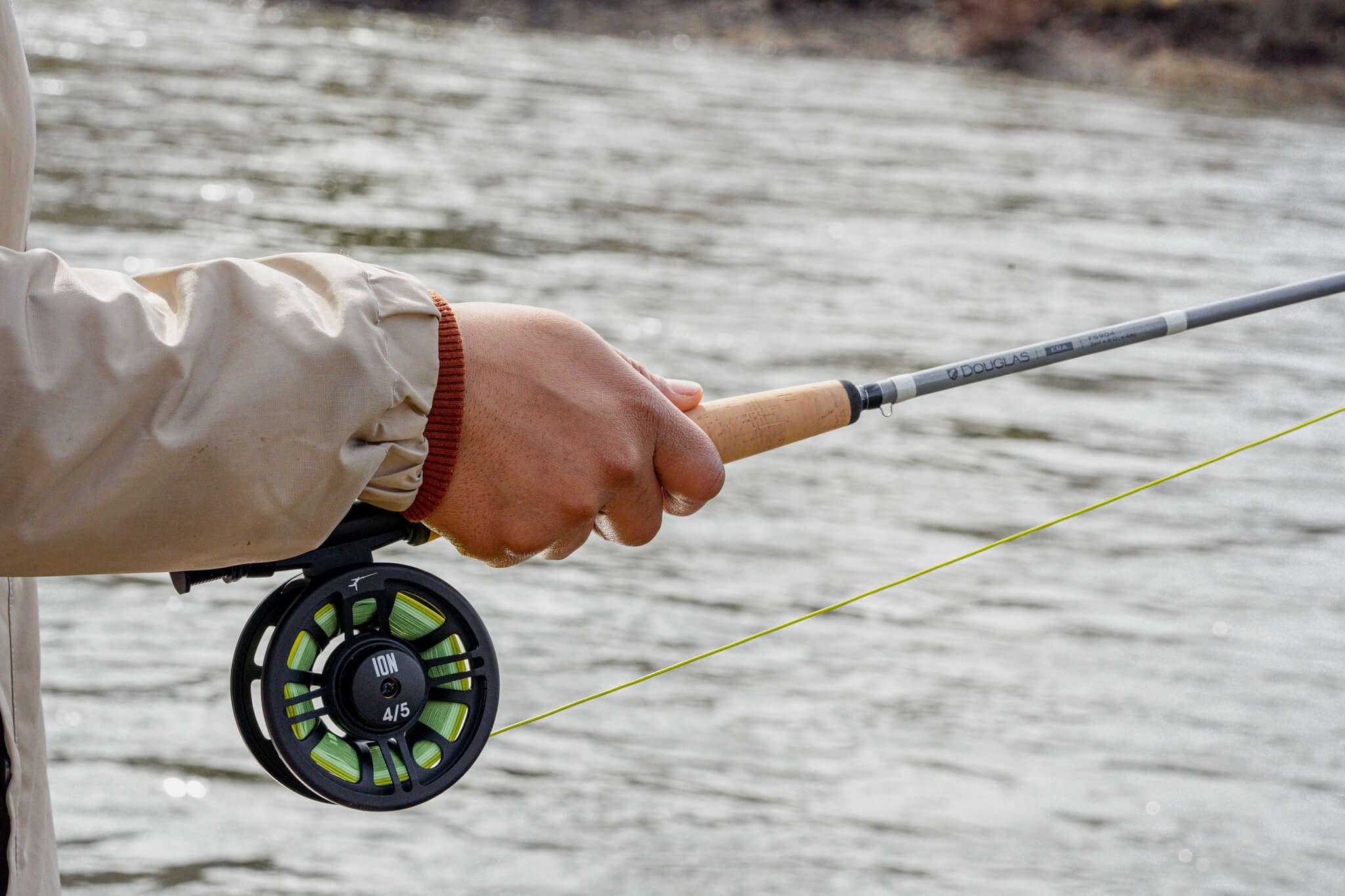Selecting Flies For Trout
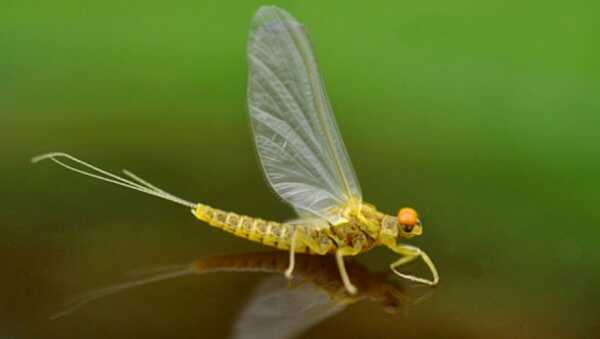
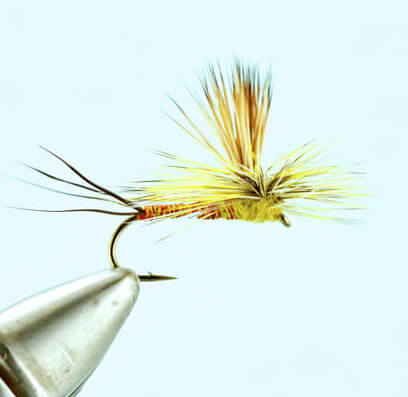
Selecting flies for trout can be overwhelming for the beginner. In this section we break down the fly buying process to make it simple and enjoyable.
They come in all shapes, sizes, and colors. Some so gaudy they scream to be purchased, and some so dull you pass right over them. Each one represents a little bit of hope for the future, and every fly you see in a shop- someone thinks it works. How do you decide which ones to pick when selecting flies for trout, when you’re just getting started?
At the beginning, it makes sense to let the fly shop person grab you a few flies. Let them know you’re just starting, mention a budget and they’ll help in selecting flies for trout for your specific area. We’ve said it before and it bears repeating. No shop is going to sell you flies that don’t work, because they want you to come back. Business doesn’t want to get $50 from you once, they want to average $10 a week for the next 10 years, or until you decide to tie your own.
We’ll get you there too!
Depending on where you live, selecting flies for trout can be a small budget item or a big expenditure. For those in Helena or Billings, fishing on the Missouri River or Bighorn River, flies may not be a huge expense. Those two rivers are Montana tailwaters, meaning they have a bottom release dam controlling water temperature and flow. Tailwaters are famous for large trout, with enormous populations of scuds and sowbugs. You can do a lot of damage on those rivers with 3-4 well-chosen patterns.
Contrast that with Montana’s freestone river hatches. At some point in the season, you run into 3-5 different species of stoneflies, about 15 different mayflies and 4 different caddis. To effectively fish those insects, you need nymphs and dries to match. Add some streamers into the mix, and the next thing you know- you own some flies! This is when it becomes a little bit tricky when selecting flies for trout. Where you live in the country and the rivers you fish has everything to do with selecting trout flies. We’re here to help you understand.
We know, not in the brochure!
The initial year fly fishing can be quite expensive when it comes to flies. Aquatic insects are cyclical, changing as the season progresses. In Missoula fly fishing, the season starts in March with Skwalas, Blue Winged Olives and Western March Browns. So you buy some. Come June, you need a bunch of different bugs, and then it’s August, and the June bugs are less effective. Back to the fly shop for August’s insect imitations. Same with September and October. It feels like every time you sneeze in year one, you’re dropping $15-$40 selecting flies for trout when you hit the water month to month.
Then it’s back to March, and you trudge to the fly shop with the requisite $40. And all of a sudden, you find the flies you bought last year at this time are valid again! Oh, happy day! You made it through the cycle, and your flies are good to go. It doesn’t matter if you’re in Missoula, in Montana or on your home waters- insects are cyclical, returning at the same time every year. Once you have the flies, they’re good every year at that time.
Fly Buying Strategies
When you start fly fishing, you’re not sure what’s going on, and tend to spread fly purchases out. Each bin dip is $2.75-$4.00, and you’re keenly aware how much money is going to this part of fly fishing. You haven’t developed any ideas as to favorite flies, and to the novice, each fly is a crap shoot. This where you can lean on a couple of things.
One, the fly shop is up on what’s going on right now on the water. Listen to them when selecting flies for trout. If they say get two of a certain fly, you know it’s hot, and worth having two. They also ask questions like when will you be on the water. It doesn’t help to have the magic fly hatching between 2:00 and 4:00 if you’re fishing after dinner. Yes, it can get that technical.
Two, nymphs are very, very similar. Click here to go to Identifying insects. Then click here to go to Nymphs, Dry Flies and Streamers. Nymphs are where the action is. If you want to catch trout, you go subsurface. Simple as that. The most common insect in Missoula rivers is the mayfly. There are more mayfly nymphs on the bottom than anything else. As you saw in Identifying Insects, these nymphs all have the same characteristics. A non-descript mayfly nymph, like an Umpqua Pheasant Tail Jig or a Hare’s Ear Jig will be a good choice any time of the season.
A non-descript nymph is an all-purpose nymph. It’s not a specific imitation, it’s more of a general imitation. Nymphing trout eat what comes by most of the time. Show them something that looks like food and they take. Focus on a few non-descripts, and your nymph selection and selecting flies for trout gets a lot easier. Have some San Juan Worms. This fly is available to trout 365 days a year. So trout eat them 365 days a year. Never a bad fly to own. Another great Montana non-descript is the Pat’s RubberLegs. It’s a great stonefly nymph imitation, and a dark Pat’s covers a lot of bases underwater.
As you gain experience, you’ll start to find bugs that work for you. Go deeper in these bugs. By deeper we mean you want to have more than one. For a favored fly, you may need 2-3 to get you through the day.
When it comes to hatch matching, we definitely err on the side of shallow and wide. Shallow and wide is defined in this way. If you decide to buy 4 Green Drakes, don’t buy 4 of the same Green Drake. Get two of one style, and one each of two others. This way you have some variation for the tougher fish, as well as learning what works best for you.
It’s a fair question to ask, what do you mean it works better for me? Isn’t a fly a fly? Yes and no. If you have confidence in a fly, you’re going to fish it better. You’re more on your game-you expect a strike on every cast. You fish that fly better. If you think it works better, it does work better. Simple as that.
Saving Your Flies
Having just decided it’s Top Ramen for dinner in order to get 3 more flies, it’s difficult to think them as an expendable piece of tackle. But unfortunately, when you’re fishing, really fishing hard, you’re going to lose flies. Which hurts a bit when selecting flies for trout knowing they may be lost the same day you buy them.
Trout love structure. Wherever you see a downed branch in the water, a big boulder or any current break, you find trout. Trout live close to structure. To make them eat, your fly also needs to be very close to the structure.
Not to bring up a sore subject, but as a novice, your cast may not have pinpoint accuracy. That means you have a good chance of snagging your fly on the structure. Or you do the opposite. While you can save a lot of flies by floating your bug 3 feet from the hidey hole, and not snagging on the structure, you’re not going to catch a lot of trout. At some point, you have to get your fly close to the trout’s nose.
This is where you need to make a decision. And DON’T listen to fly shop people for the answer to the dilemma. When you’ve hooked your fly in the debris, you can often go over and unsnag it. When you do, you spook any and all trout that had set up shop there. Move to another place. The trout where you just retrieved your fly from are gone.
Most fly shop people just break off the fly, tie a new one on, and cast again. They’re not going to ruin the fishing for the sake of a fly. That’s because they tie their own flies!
You’re not paying for materials when you buy a fly. You pay for the time and expertise of the tyer. Most flies use about $.35 of materials, with $.25 of that going to the hook. A fly tyer, which 99% of all shop employees are, says I’m not losing much, and breaks off. As a fly buyer selecting flies for trout, you don’t have that luxury.
If now you’re all gung-ho to tie flies, bear this in mind. It takes about $250 to get started in tying. And every time you pick a different pattern, it’s going to cost another $25-$40. Fly tying isn’t cheap in the short run, it’s only cheap in the long run. It also takes time and dedication to do it properly. If after reading that, you still want to tie, GREAT! Fly tying is a doorway to the inner workings of fly fishing, and we feel the benefits far outweigh the cost.
Of course we think that way! We work in a fly shop! Our views are skewed, and you should know that from the start.
But fly tying is great . . . .
Why are we making such a big deal of this? Because every one of us has done something EXCEPTIONALLY stupid in our lives to get a fly back. We know of boats tipping over trying to beach to retrieve a fly. Waders taking spectacular headers in fast water attempting to retrieve a hot bug. For the record, no bug is worth falling in or tipping over for. Remember that as you’re floating down the river, feet first for safety, having done what we’ve all done to get a fly back.
Water seeks the lowest level. You never walk uphill to enter water, you always walk down to find water. Water is critical in growing plant life, so there’s always something big and green behind you, just waiting to grab your fly on the back cast. KNOW WHAT’S BEHIND YOU! If you’re not sure, then look! Just as many flies are lost in trees and grass on the back cast as are to structure in the water.
There are times, not often but some, when you might need to face backwards so your “backcast” threads its way between two trees, and you drop your true back cast on the water, spinning to face forward as you lay your back cast out as a cast. Sometimes it’s all you can do to get a decent back cast. Creativity on the water is often necessary to get your fly where it needs to be.
Practicing your cast, focusing on loop size, aim of the back cast and control of the back cast angle will save a lot of money in flies. Practice your casting!
Care and Feeding Your Fly Box
As you see, it can really add up when selecting flies for trout. It makes sense to take care of your flies after a day’s fishing. Once you’re off the water, open your fly box(es) and let them dry out completely. Hooks are metal, and metal rusts. Rust discolors your fly, and creates rough spots in the hook eye. Tie on a rusty hook, and it can slice your tippet like a hot knife through butter. A little care at the end of the day will extend the life of your flies.
As you progress in fly fishing, you learn which flies work for you. Make sure you have those flies in your box. Seems like a no brainer, but favored flies are also the flies you lose most. It’s easy to forget losing the two Umpqua Pheasant Tail Jigs, and next time you hit the water, you don’t have any. After a day’s fishing, try to get into the fly shop to replace what disappeared. That way you’re always prepared when the next fishing opportunity presents itself.
Stay Calm, Stay Focused
We see it all the time. A novice comes into the shop and starts filling up our little buckets full of when selecting flies for trout. We look in the buckets and see a completely random, unfocused purchase of flies. It’s so easy to do! You’re excited, there’s empty spaces in your box- you decide now’s the time to really stock up. Try to remain calm. Buy what you need when you need it. Replace the ones that work. Stay focused on the here and now. Filling your fly box in the sheer joy of the moment is fun and satisfying, but a little patience saves you from opening your box 3 months later and asking this pertinent question, “What was I THINKING?!”
We’ve never done that. We’ve only read it in a magazine. And, it’s MUCH worse when you’ve tied them!
Buying Flies For A Destination
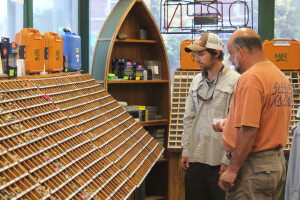
You’ve decided to come to Montana to fish! Good call! You’ve spoken to your local shop, and of course they have a decent idea what’s going on in Montana in July. You buy bugs from your local shop, (hey, that shop is your friend!) and head out west.
Upon landing, you head to the local shop, and start asking questions. What’s going on? What’s hatching? The fly shop starts telling you it’s Pale Morning Duns and Golden Stones, and you say I already have those. Well, they start to lose interest. It’s human nature. The destination shop is in business as well, and if you seem to have everything you need, there’s no reason to be extra helpful. As fly shop employees, we try not to do this, but it happens to the best of us.
Your local fly shop has a good idea of what you’ll see, but the destination shop knows exactly what’s going on. They have local flies tested on their waters that simply work better. Save a little money to shop your destination. It doesn’t have to be a lot, but show some appreciation for the local knowledge, and you’ll find the local knowledge flows a lot more freely when you’re making a purchase. Cynical? Absolutely! But true as the day is long.
Flies are the sneaky expensive part of fly fishing. Think of them as groceries. They constantly need to be replenished, and while not expensive as single items, they add up! Stay focused, buy what you need when you need it, and you’ll find your fly boxes grow organically and intelligently.
Hey, have we told you about this new fly, it’s the hottest bug on the river . . . . .
